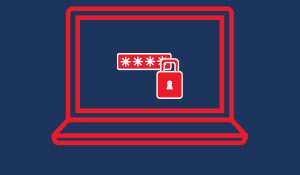Cybersecurity Risk Assessment from A to Z
In our increasingly interconnected world, where data flows freely and digital landscapes expand at a breakneck pace, the need for robust...

As businesses harness the power of technology to drive efficiency and growth, they also become prime targets for cyber threats. It is within this landscape of constant evolution and persistent challenges that the significance of "Vulnerability Management" emerges as a beacon of cybersecurity resilience.
| TABLE OF CONTENT |
From the identification of potential weaknesses to the meticulous process of prioritization and remediation, vulnerability management stands as a pivotal element in the arsenal of cybersecurity practices.
Vulnerability management in cybersecurity is a systematic and ongoing process of identifying, assessing, prioritizing, and mitigating security vulnerabilities within an organization's information technology infrastructure. This proactive approach aims to reduce the risk of unauthorized access, data breaches, and other cyber threats by regularly scanning and evaluating systems, applications, networks, and other components for potential weaknesses.
The key steps in vulnerability management include discovery, assessment, prioritization, and remediation, with the ultimate goal of maintaining a secure and resilient digital environment. This process helps organizations stay ahead of potential security risks, comply with industry regulations, and safeguard sensitive information from exploitation by cyber adversaries.
In summary, while both vulnerability management and patch management are critical components of a robust cybersecurity strategy, they differ in their scope and focus. Together, these practices contribute to a comprehensive defense against cyber threats.
1 |
Discovery: The vulnerability management process begins with the discovery phase, where organizations actively seek potential vulnerabilities within their IT infrastructure. This can be achieved through automated tools, manual assessments, or penetration testing. The objective is to identify weaknesses in software, hardware, networks, or other components that could be exploited by cyber threats. |
2 |
Assessment : After discovering vulnerabilities, the next step is assessment. This involves a detailed analysis of each identified vulnerability to determine its severity and potential impact on the organization's security. Factors such as the likelihood of exploitation, the criticality of the affected asset, and the potential business impact are considered. This step helps organizations prioritize vulnerabilities based on the level of risk they pose. |
3 |
Prioritization: Prioritization is a crucial aspect of the vulnerability management process. Not all vulnerabilities carry the same level of risk, and resources must be allocated efficiently. Vulnerability management tools often assign a risk score to each vulnerability, considering various factors. This enables organizations to focus on addressing the most critical vulnerabilities first, reducing the overall risk to their IT infrastructure. |
4 |
Remediation: Remediation involves implementing measures to address and mitigate the identified vulnerabilities. This step may include applying software patches, updating configurations, or making structural changes to the IT environment. The goal is to eliminate or minimize the risk of exploitation. Regularly updating systems and applying patches is a fundamental part of the remediation process to ensure a robust defense against known security threats. |
5 |
Validation and Monitoring: The vulnerability management process doesn't end with remediation. Organizations need to validate that the implemented measures are effective in mitigating the identified vulnerabilities. Continuous monitoring of the IT environment is essential to detect new vulnerabilities that may arise and to ensure that previously addressed vulnerabilities remain resolved. This ongoing validation and monitoring help organizations maintain a proactive and adaptive cybersecurity posture. |
6 |
Documentation and Reporting: Organizations maintain documentation of the vulnerability management process, including details of identified vulnerabilities, risk assessments, remediation actions, and validation results. Regular reports are generated to provide stakeholders, such as IT administrators, security teams, and management, with insights into the organization's security posture, ongoing vulnerabilities, and the effectiveness of remediation efforts. |
DriveLock Vulnerability Management offers an all-encompassing perspective of your infrastructure, exposes your attack surface, and empowers you to oversee and assess your cyber risk.

DriveLock supports organisations by:
Click here to learn more about Vulnerability Management!
The DriveLock HYPERsecure Platform can be tested free of charge and without obligation for 30 days.
A key part of this is effective vulnerability management, and there are practical steps you can take to improve it. Here are five essential tips to help you better identify and address security weaknesses.
Regular Vulnerability Assessments: Conduct regular and thorough vulnerability assessments across your organization's systems and networks. This involves scanning for potential weaknesses, identifying security loopholes, and understanding the risk landscape. Regular assessments provide insights into evolving threats and help prioritize remediation efforts.
Prioritize and Remediate Critical Issues: Categorize vulnerabilities based on their severity and potential impact on your organization. Prioritize the remediation of critical vulnerabilities to address the most significant threats first. This strategic approach ensures that resources are allocated efficiently to mitigate the most pressing security risks.
Implement Patch Management: Establish a robust patch management process to promptly address vulnerabilities discovered during assessments. Regularly update and patch software, operating systems, and applications to close potential entry points for attackers. Automated patching systems can streamline this process and reduce the window of exposure.
Employee Training and Awareness: Educate employees on security best practices and make them aware of their role in vulnerability management. Human error is a common cause of security breaches, so fostering a security-conscious culture is crucial. Employees should understand the importance of reporting potential vulnerabilities promptly and following secure practices in their daily activities.
Incident Response Planning: Develop a comprehensive incident response plan that includes specific procedures for addressing vulnerabilities. This plan should outline steps to be taken in the event of a security incident, ensuring a swift and coordinated response. Regularly test and update the incident response plan to align with evolving threat landscapes and organizational changes.
In the ever-expanding digital frontier, where cyber adversaries persistently seek opportunities, vulnerability management acts as a sentinel, tirelessly scanning for potential weaknesses and fortifying the defenses. It is not just a technical protocol; it is a strategic imperative for organizations aiming to navigate the complexities of the digital era secure.
Let vulnerability management be more than a practice; let it be a mindset—a commitment to staying ahead of the curve, adapting to emerging threats, and fostering a culture of cyber resilience.

In our increasingly interconnected world, where data flows freely and digital landscapes expand at a breakneck pace, the need for robust...

Code injection attacks are a growing cybersecurity threat that can severely compromise system integrity. Discover how these attacks work and what you...

In the current age of digitalization, companies across various sectors and sizes face a growing risk of cyber attacks. Despite implementing...